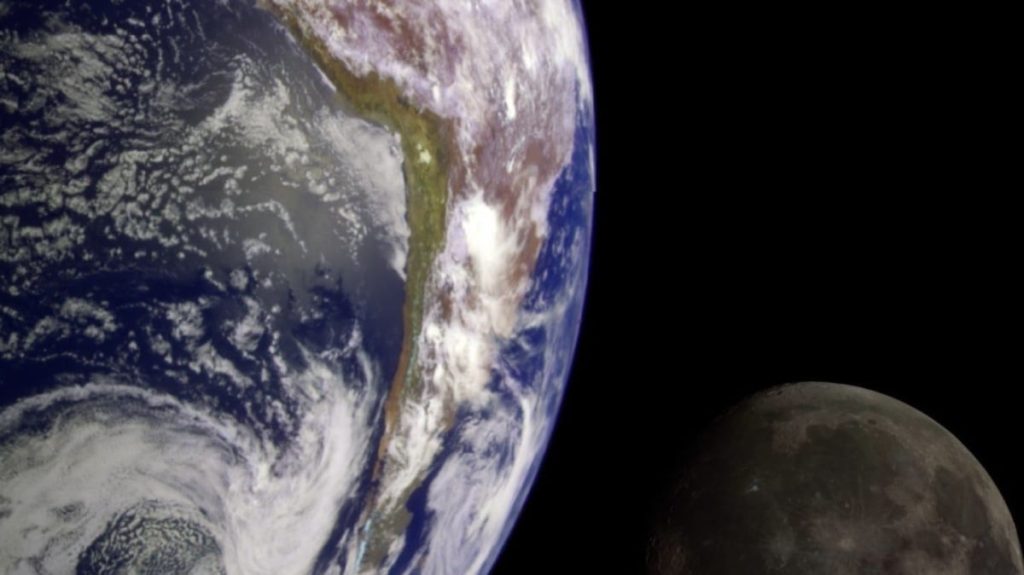Astronomers have discovered that Earth’s large, ever-looming moon is about to get company.
Beginning on Sunday, the planet will capture an asteroid sailing nearby, drawing it in for one loop around Earth before making its exit on Nov. 25. When it leaves, it will continue its trajectory around the sun. The two-month visit puts this space rock in the class of so-called “mini-moons.”
The asteroid getting its proverbial 15 minutes of fame is called 2024 PT5, discovered with the help of a NASA-funded asteroid detection system and a South African observatory in August. But before digging out binoculars from the closet, know this: It’s only 33 feet wide — about the length of a Greyhound bus — and not bright enough to view with the naked eye or an amateur telescope.

Scientists suspect Earth’s only fixed-orbit moon was formed 4.5 billion years ago.
Credit: NASA
Throughout the solar system, close to 300 moons orbit the eight planets and Pluto, and scientists often find new ones as survey methods improve. The vast majority of moons circle gas giants Saturn and Jupiter.
Mashable Light Speed
They come in a variety of shapes and sizes, but their defining characteristic is that they orbit another cosmic object larger than themselves. While these natural satellites are quite common, moons are special to humans because Earth has just one in a fixed orbit — albeit a big rocky one roughly one-quarter Earth’s size about 239,000 miles away.
Earth has captured asteroids and pulled them into orbit with its gravity before, but often these space rocks fly by without completing a full circuit around the planet. Compared to mini-moons of the recent past, 2024 PT5 is a short-timer. In July 2006, a visitor dubbed RH120 stayed in orbit around Earth for a year before getting flung out in July 2007. Astronomers believe one that escaped in May 2020 could have been sweeping around the planet for several years.

Throughout the solar system, close to 300 moons orbit the eight planets and Pluto, and scientists are often finding new ones as survey methods improve.
Credit: NASA composition illustration
Two astronomers from the Universidad Complutense de Madrid in Spain made the latest mini-moon discovery while calculating the dynamics of near-Earth objects. Their findings were published in the journal Research Notes of the AAS. Prior research through NASA’s Asteroid Terrestrial-impact Last Alert System had already shown that the space rock was not a threat to smashing into Earth.
While studying 2024 PT5’s path, the research duo, Carlos de la Fuente Marcos and Raúl de la Fuente Marcos, could also trace back to its origin. The space rock likely came from the so-called Arjuna asteroid belt, a group of small rocks concentrated near Earth that was discovered in the early 1990s.


